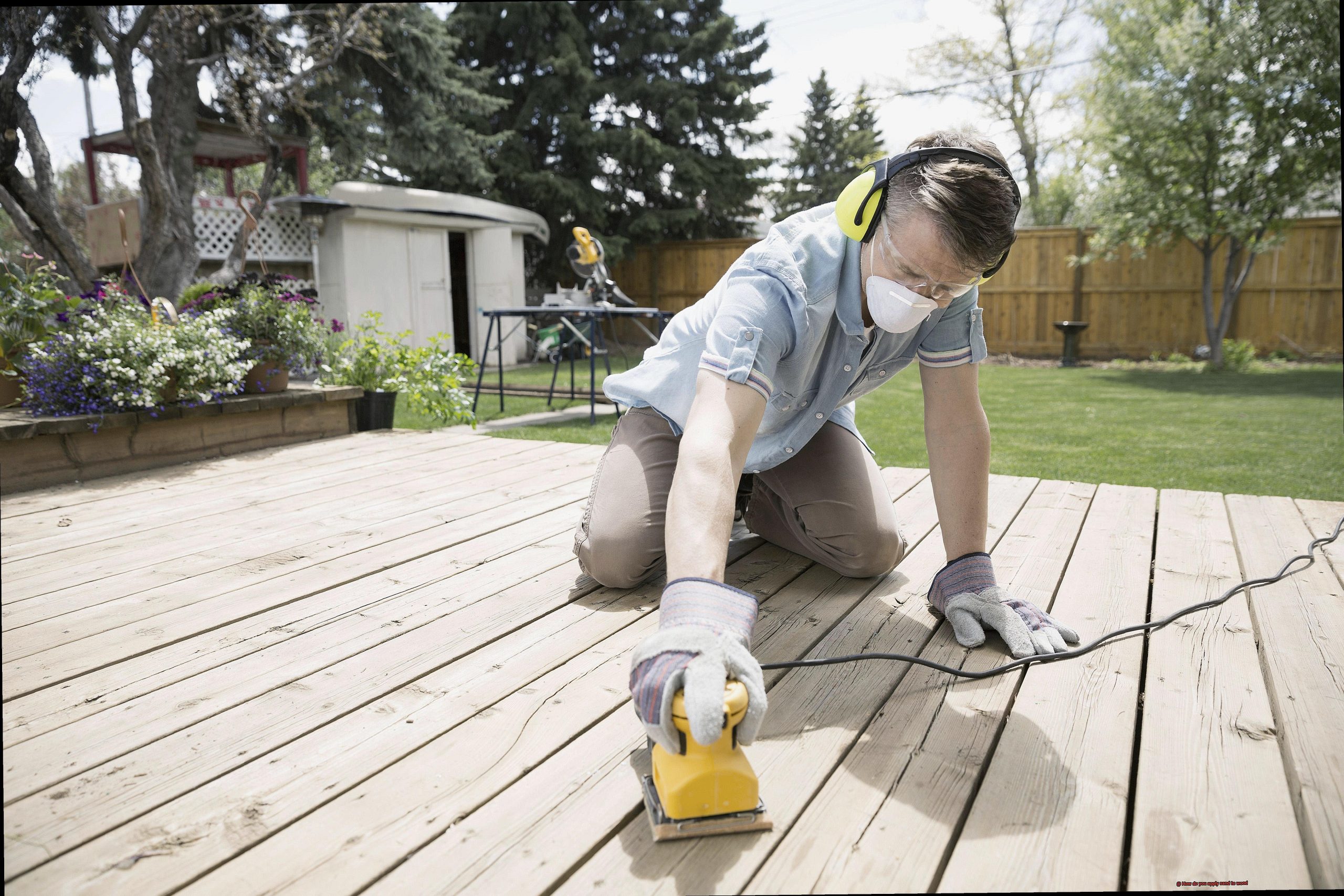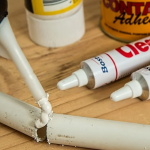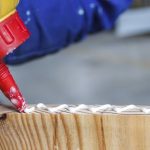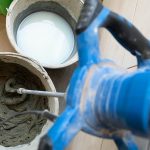Wood, a timeless and versatile material, has captivated our hearts for centuries. When it comes to enhancing its natural beauty, there are countless techniques to explore. However, one method that stands out for its uniqueness and allure is applying sand to wood. This ancient practice not only adds character and texture but also creates a visually stunning finish that will leave you spellbound.
Whether you’re an avid woodworking enthusiast or just looking to breathe new life into a tired piece of furniture, the process of applying sand to wood may seem unfamiliar. But fear not. In this blog post, we’ll dive deep into this fascinating technique, guiding you step by step along the way.
Armed with the right knowledge, tools, and techniques, you can transform ordinary wood into a true work of art. So let’s uncover the secrets behind achieving a mesmerizing sand finish that will make your heart skip a beat.
Understanding the Basics:
Contents
- 0.1 Understanding the Basics:
- 0.2 Choosing the Right Sandpaper:
- 0.3 Applying Sand Like a Pro:
- 0.4 Ensuring a Beautiful Finish:
- 1 Gather the Necessary Supplies
- 2 Preparing the Wood
- 2.1 Step 1: Inspect the Wood – Unveiling Imperfections:
- 2.2 Step 2: Remove Existing Finish or Coating – Unleashing the Raw Beauty:
- 2.3 Step 3: Cleanse, Purify, and Prepare – A Pristine Canvas:
- 2.4 Step 4: Fill Gaps and Holes – Embracing Perfection:
- 2.5 Step 5: Sanding – The Dance of Precision:
- 2.6 Step 6: Remove Dust and Debris – A Flawless Finish Beckons:
- 3 Sanding with Coarse Grits
- 4 Moving to Finer Grits
- 5 Using a Sanding Block or Electric Sander
- 6 Wearing a Dust Mask and Safety Glasses
- 7 Removing Dust and Debris
- 8 Applying Finishes or Coatings
- 9 Conclusion
Before we jump into the application process, let’s get familiar with the fundamentals. Applying sand to wood involves skillfully using sandpaper to create exquisite textures and grain patterns on the surface. But it’s not just about looks; sanding wood serves functional purposes too. It helps remove imperfections, prepares surfaces for staining or painting, and even repairs damages.
Choosing the Right Sandpaper:
Different projects call for different grits of sandpaper, so choosing the right one is crucial. The grit refers to how coarse or fine the sandpaper is—lower grits like 40 to 80 are perfect for heavy-duty sanding while higher grits like 120 to 220 give you that smooth-as-silk finish.
Applying Sand Like a Pro:
Now that we understand the concept and have our sandpaper ready, let’s dive into the application process itself. Begin by securing your wood piece firmly—clamp it down or place it on a stable work surface. Then, start sanding in the direction of the wood grain, applying light to moderate pressure. Keep your strokes consistent to ensure even sanding across the entire surface.
Ensuring a Beautiful Finish:
As you progress, pay close attention to the smoothness and texture of the wood’s surface. Avoid applying too much pressure, as it can lead to uneven sanding or even damage the wood. Regularly inspect and feel the wood to evaluate your progress and make adjustments as needed.
Gather the Necessary Supplies
Sanding wood is a crucial step in any woodworking project, as it helps to create a smooth and even surface for finishing. Whether you’re a beginner DIY enthusiast or a seasoned woodworker, it’s important to gather the necessary supplies and follow the right techniques to achieve professional results. In this comprehensive guide, we will walk you through the steps involved in sanding wood, along with the essential supplies you’ll need for the job.
Step 1: Gather the necessary supplies
Before you begin sanding, make sure you have the following supplies at hand:
- Sandpaper: Choose different grit levels, starting from coarse (80-100) to fine (220-240) for a smooth finish.
- Sanding block or electric sander: Pick the tool that suits your needs and comfort level.
- Safety goggles and dust mask: Protect yourself from flying debris and harmful dust particles.
- Vacuum cleaner or broom and dustpan: Clean up the debris after sanding.
- Stain or finish products with brushes or applicators (if required): Enhance the appearance and protect the wood.
Step 2: Prepare the wood
To ensure a clean surface, remove any existing finishes or coatings using a paint stripper or by sanding off the old finish until the wood is bare.
Step 3: Start sanding
Begin with a coarse-grit sandpaper to eliminate rough areas and imperfections. Use long, even strokes in the direction of the wood grain. Let the sandpaper do the work; avoid applying excessive pressure.
Step 4: Progress to finer grits
Gradually move to finer grits of sandpaper to smoothen out the surface and remove scratches from previous grits. Optimal results are achieved by always sanding in the direction of the wood grain.
Step 5: Consider using a sanding block or electric sander
Using a sanding block distributes pressure evenly, preventing uneven sanding. An electric sander is ideal for larger projects or harder woods, but exercise caution to avoid removing more material than intended.
Step 6: Protect yourself during sanding
Shield yourself from inhaling fine particles and prevent eye injuries by wearing a dust mask and safety glasses. Work in a well-ventilated area or use a dust collection system if available.
Step 7: Clean the surface
After sanding, wipe down the wood surface with a clean cloth or tack cloth to remove any dust or debris. This step is crucial before applying finishes or coatings to ensure proper adhesion.
Preparing the Wood
Before embarking on your wood project, it is essential to prepare the surface properly to achieve a flawless finish. In this step-by-step guide, we will delve into the art of preparing wood for sanding, ensuring exceptional results that will leave you in awe.
Step 1: Inspect the Wood – Unveiling Imperfections:
Embark on a meticulous inspection of the wood, unveiling hidden imperfections that require attention. Cracks, dents, and loose pieces demand repair or replacement before sanding commences. By addressing these issues, you pave the way for a uniform and smooth surface.
Step 2: Remove Existing Finish or Coating – Unleashing the Raw Beauty:
Unlock the raw beauty of the wood by stripping away any existing finish or coating. Enter the realm of choice with either a paint stripper or sandpaper.
Dive into the depths of instructions provided by manufacturers when using a paint stripper, ensuring safety remains paramount.
If you choose sandpaper, begin with a coarse grit (around 60 or 80), gradually ascending to a finer grit (around 120 or 150) for a luxuriously smooth finish.
Step 3: Cleanse, Purify, and Prepare – A Pristine Canvas:
Cleanse the wood surface with meticulous dedication, eradicating every speck of dust, dirt, or debris.
Equip yourself with a vacuum cleaner or a clean cloth to embark on this sacred purification process. Remember, this step is not to be taken lightly, as it sets the stage for optimal adhesion of the forthcoming sand.
Step 4: Fill Gaps and Holes – Embracing Perfection:
Embrace perfection by filling any gaps or holes encountered on your wooden canvas. Employ wood filler as your artistic tool, following the manufacturer’s instructions diligently. Allow the filler to dry completely, ensuring a seamless surface before moving forward.
Step 5: Sanding – The Dance of Precision:
Now, the time has come to embark on the dance of precision, smoothing the wood’s surface in preparation for sanding.
Begin with a medium-grit sandpaper (around 100 or 120), gracefully caressing the wood in the direction of its grain.
Apply even pressure, ensuring every inch is adorned with your artistic touch. As you advance, journey towards finer grit sandpapers (such as 180 or 220) to unlock an unparalleled smoothness.
Pause intermittently to evaluate your progress and take breaths of rejuvenation, protecting the delicate wood surface from any inadvertent harm.
Step 6: Remove Dust and Debris – A Flawless Finish Beckons:
As the sanding symphony nears its finale, sweep away any remnants of dust or debris that may mar your masterpiece.
Enlist the aid of a vacuum cleaner, a clean cloth, or perhaps a specially-crafted tack cloth, designed to leave no trace behind.
Remember, this final act is non-negotiable if you seek to bask in the glory of a truly flawless finish.
Sanding with Coarse Grits
Sanding with Coarse Grits: Unleashing the Power of Abrasives
Welcome to the exhilarating world of sanding, where imperfections are banished and surfaces are transformed into works of art. Today, we are diving deep into the realm of coarse grits and exploring their indispensable role in the sanding process. So strap on your safety goggles and dust mask, because we’re about to embark on an epic sanding adventure.
What exactly are coarse grits, you ask? Well, imagine them as the superheroes of sandpaper. Ranging from 40 to 80 grit, these coarse grits possess a formidable power when it comes to obliterating larger imperfections and shaping wood. Deep scratches, gouges, and uneven surfaces stand no chance against the mighty force of coarse grits.
But before you set off on your sanding journey, make sure you have all the necessary tools at your disposal. Your trusty sidekick in this quest can be either a power sander or a sanding block. Equipped with coarse-grit sandpaper, you’ll be armed to conquer any rough terrain that lies ahead. And don’t forget to suit up with safety goggles and a dust mask for protection. A clean cloth or vacuum will also prove invaluable for banishing dust and debris – cleanliness is key.
Now that you’re fully armed with the right tools, it’s time to unleash the dance of sanding. Begin by selecting the lowest grit available and gradually work your way up to finer grits for a smoother finish. This step is crucial as it prevents overzealous material removal and ensures a gentle touch on your precious wood.
With a firm grip on your power sander or sanding block, apply even pressure on the wood surface. Move in smooth motions along the grain of the wood, covering every inch systematically. But remember, don’t go overboard with pressure – we want to shape, not damage.
As you sand away, keep a vigilant eye out for any stubborn imperfections that may still be lurking beneath the surface. Deep scratches or blemishes that refuse to surrender should be your primary target. Give them the attention they deserve with additional passes using coarse grit sandpaper. Blend these battle scars seamlessly with the surrounding wood to achieve a uniform and flawless look that would make any artist proud.
But the journey doesn’t end there, my sanding warriors. Throughout this epic endeavor, cleanliness is your trusted ally. Use a vacuum or a clean cloth to banish any debris and loose particles that dare to mar your workspace. This not only keeps your battleground tidy but also ensures that your sandpaper remains effective by preventing clogging.
And now, for the grand finale of this sanding saga. Once you’ve completed your heroic sanding with coarse grits, it’s time to transition to finer grits for the final touch. These fine grits will smooth out any remaining scratches or roughness left behind by their coarse counterparts. Gradually progress through the finer grits until you achieve a polished finish that’s ready to take center stage – whether it be painting, staining, or applying a protective coating.
Moving to Finer Grits
Join us on this epic adventure as we delve into the importance of transitioning to finer grits and unlock the true potential of your wood projects. Grab your sandpaper and let’s embark on a journey that will transform your creations into masterpieces.
The Importance of Fine Grits
Coarse grits are the superheroes that rid your wood of roughness and imperfections, but they leave their mark behind. Enter finer grits, the unsung heroes that smooth out the surface, preparing it for its final touch. They are the key to a flawlessly smooth finish.
Types of Sandpaper Grits
From coarse to extra fine, sandpaper grits offer a spectrum of power. Coarse grits (40-60) are your starting point, eliminating larger imperfections with their brute force. Medium grits (80-120) refine the surface, leaving no room for roughness. Fine grits (180-220) create a silky-smooth finish, ready for finishes or sealants. And for that ultimate shine, extra fine grits (320 or higher) swoop in, bringing a polished sheen and aiding between coats.
Proper Technique for Using Finer Grits
To harness the full potential of finer grits, follow these steps:
- Thoroughly sand with the previous coarser grit to ensure an even surface.
- Switch to the next finer grit and repeat the sanding process.
- Apply even pressure while moving the sandpaper in a consistent back-and-forth motion.
- Regularly check the progress and feel of the wood surface for smoothness.
Maintaining Sandpaper Effectiveness
To keep your sandpaper in tip-top shape:
- Keep it clean and free from debris to avoid scratching the wood surface.
- Regularly brush or tap the sandpaper against a clean surface to remove any accumulated debris.
Using a Sanding Block or Electric Sander
Woodworking is an art that requires meticulous attention to detail, and achieving a smooth and flawless finish is essential to bring out the true beauty of your creations. To accomplish this, sanding is a crucial step in the process. In this guide, we will explore the advantages and disadvantages of using a sanding block or electric sander, helping you unleash the full potential of sand on wood surfaces.
Let’s begin with sanding blocks. These handheld tools are perfect for smaller projects or areas that demand precision. They come in various shapes and sizes, but rectangular or square blocks are the most common. Typically made of hard materials like plastic or rubber, sanding blocks have one or more sides with a layer of sandpaper attached.
To start, choose the appropriate grit of sandpaper for your project. Grit refers to the coarseness or fineness of the sandpaper, with lower numbers indicating a coarser grit and higher numbers indicating a finer grit. For initial sanding or removing rough surfaces, begin with a coarser grit (such as 80 or 100) and gradually progress to finer grits (such as 120 or 150) for smoothing and finishing.
Attach the desired grit of sandpaper to your sanding block and firmly hold it in your hand. Apply even pressure as you move the block back and forth along the wood surface. It is crucial to always sand in the direction of the wood grain to prevent damage or visible scratches. Keep the block flat against the wood, avoiding any tilting that may result in uneven sanding.
Consistency is key when using a sanding block. Apply moderate pressure that allows the sandpaper to effectively remove material from the wood surface without excessive force. Applying too much pressure may cause the sandpaper to wear out quickly, while using too little pressure may result in ineffective sanding.
Now, let’s move on to electric sanders – the superheroes of sanding. These power tools automate the sanding process and are ideal for larger surfaces or extensive projects. There are different types of electric sanders, including random orbit sanders, belt sanders, and detail sanders. They are generally more efficient and time-saving compared to manual sanding methods.
Before delving into the world of electric sanders, familiarize yourself with the specific tool you’re using and follow the manufacturer’s instructions for safe and effective usage. Electric sanders have a motor that drives a sanding pad or belt in a circular or linear motion, depending on the type of sander.
Ensure that the sanding pad or belt is securely attached to the sander and that the tool is connected to a power source if required. Turn on the sander and gently place it on the wood surface. Let the rotating or moving pad/belt make contact with the wood. Move the sander in smooth, even passes across the surface, following the direction of the wood grain.
It’s important to bear in mind that electric sanders can be more aggressive than sanding blocks, especially when using coarse grit sandpaper or a powerful sander. Exercise caution and avoid applying excessive pressure or leaving the sander in one spot for too long. Doing so may result in uneven sanding or damage to the wood.
After completing the sanding process with either a sanding block or electric sander, it is crucial to remove any dust or debris from the wood surface before proceeding with further treatments like staining or painting. Use a vacuum cleaner, compressed air, or a clean cloth to ensure a clean canvas for your next step.
Wearing a Dust Mask and Safety Glasses
Let’s shed light on the importance of adorning yourself with a dust mask and safety glasses.
When you sand wood, minuscule particles and debris take flight, infiltrating the air around you. These particles can invade your lungs, causing irritation and potential long-term damage. Equally menacing, these airborne foes can assail your eyes, triggering irritation or, worse yet, injury. Thus, safeguarding yourself while sanding wood is paramount.
To begin, let’s delve into the perils of forsaking protective gear. Inhaling wood dust can inflict respiratory problems like asthma, bronchitis, or even lung cancer. This is no laughing matter. And let us not overlook the eyes. Even a tiny speck of debris can spell disaster if it infiltrates your delicate eye.
Now that we comprehend the risks, let’s explore how to shield ourselves. A dust mask emerges as an unsung hero in filtering out these perilous particles. Seek masks labeled N95 or N99 for heightened filtration efficiency. The mask should snugly envelop your face, ensuring both maximum protection and comfort.
But our defense does not halt there. Safeguarding your eyes assumes equal importance. Safety glasses boasting impact-resistant lenses and side shields become indispensable companions. They ought to fit securely on your face, without hindering your vision. Clear lenses generally prove optimal for superior visibility.
So, before you embark on your next woodworking endeavor, bear in mind the vital significance of donning a dust mask and safety glasses. Your health and well-being are priceless. By adopting these simple precautions, you can relish the art of sanding wood while shielding yourself from lurking hazards.
Dust Mask:
- Prevents inhalation of harmful particles generated during sanding.
- Filters out wood dust, paint residue, and other contaminants.
- Reduces the risk of respiratory problems and allergies.
- Choose masks labeled N95 or N99 for higher filtration efficiency.
- Ensure a snug but comfortable fit for maximum protection.
Safety Glasses:
- Protects eyes from flying debris and dust particles.
- Prevents eye irritation and potential injuries.
- Look for impact-resistant lenses and side shields.
- Secure fit without obstructing vision.
- Clear lenses preferred for good visibility.
Removing Dust and Debris
To ensure a smooth surface, the first step is to remove dust and debris from the wood before sanding. In this comprehensive guide, we will explore effective methods to achieve a clean surface, enhance your sanding experience, and extend the lifespan of your sandpaper.
Step 1: Vacuum Away Loose Particles
Equip your trusty vacuum cleaner with a brush attachment – the secret weapon in removing dust without causing any damage. Gently glide the brush attachment over every inch of the wood, paying extra attention to corners, crevices, and edges where pesky dust loves to hide.
Step 2: Brush or Sweep Lightly
No vacuum cleaner? No problem. A soft-bristle brush or a microfiber cloth can work wonders. With light strokes, sweep or brush the wood in long, even motions, dislodging any loose particles. Remember to always work in the direction of the wood grain to avoid unsightly scratches or marks.
Step 3: Wipe with a Damp Microfiber Cloth
After brushing or sweeping, grab a slightly dampened microfiber cloth and give the wood one final wipe-down. This crucial step captures any remaining debris, leaving your wood surface clean and ready for sanding.
Step 4: Tackle Stubborn Dirt or Debris
For those stubborn spots that refuse to budge, concoct a gentle cleaning solution with mild dish soap and warm water. Dilute a small amount of dish soap in warm water, then grab a clean sponge or cloth. Gently scrub the wood surface in circular motions, focusing on areas with visible dirt or stains. Rinse off any soapy residue with a separate damp cloth and ensure the surface is completely dry before continuing.
Step 5: Specialized Cleaning Products (If Needed)
In some cases, specialized cleaning products or solvents might be necessary, especially for previously finished or stained wood. Always follow the manufacturer’s instructions when using these products and ensure proper ventilation for your safety.
Applying Finishes or Coatings
Applying finishes or coatings to wood is a crucial step in protecting and enhancing its appearance. There are several types of finishes and coatings available, each with its own unique application method and benefits. Here are some popular options to consider:
- Clear Polyurethane Coatings: These coatings provide a protective layer that seals the wood, keeping moisture at bay. To apply, start by sanding the wood to perfection and wiping away any dust. Then, grab a brush or foam applicator and begin coating the wood in thin, even layers. Follow the manufacturer’s instructions for drying time between coats. With two or three coats, you’ll achieve a durable and glossy finish that will make your wood stand out.
- Oil-Based Stains: If you want to enhance the natural color and grain of your wood, oil-based stains are the way to go. These stains penetrate the wood fibers, giving it a richer and more vibrant appearance. Before applying the stain, ensure your wood is clean and free of debris. Then, use a brush or cloth to work the stain into the wood, following the direction of the grain. Wipe away any excess after a few minutes and repeat for a deeper color.
- Water-Based Finishes: For those who are environmentally-conscious, water-based finishes are an excellent choice. They offer similar protection as oil-based stains but with lower levels of volatile organic compounds (VOCs). These finishes can be easily thinned and cleaned up with water, making them a convenient option. Follow similar steps as with oil-based stains to apply water-based finishes.
- Other Options: In addition to the above options, there are other finishes available such as lacquer, shellac, varnish, and wax. Each of these has its own unique application method and properties, so choose the right one for your project.
Conclusion
Applying sand to wood is a crucial step in achieving a smooth and flawless finish. To begin, gather your materials: sandpaper of various grits, a sanding block or power sander, and a dust mask for protection. Start by removing any existing finish or rough spots on the wood surface. Use coarse-grit sandpaper to tackle these imperfections, working in the direction of the wood grain. Remember to apply even pressure and keep the sandpaper flat against the surface for consistent results.
Once you’ve achieved a smooth foundation, it’s time to move on to finer grits of sandpaper. This will further refine the surface and prepare it for staining or painting. Switch to medium-grit sandpaper and repeat the process, following up with fine-grit sandpaper for an extra level of smoothness.
To ensure you don’t miss any spots, use a sanding block or power sander for larger surfaces. These tools provide stability and make the task more efficient. However, be cautious not to apply too much pressure as it can damage the wood.
Throughout the process, be mindful of dust buildup. Sanding generates a significant amount of fine particles that can be harmful if inhaled. Wear a dust mask and periodically clean or replace it as needed.
Lastly, after completing all necessary sanding steps, thoroughly clean the wood surface using a soft brush or cloth to remove any remaining dust particles. This step is essential before applying any finishes or coatings.
Remember, patience and attention to detail are key when applying sand to wood.






